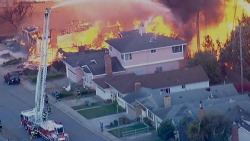The latest federal report on measures being taken to ensure the safety of natural gas pipelines across the United States raises serious concerns. While acknowledging that catastrophic, and fatal, failures such as the 2010 explosion of a Pacific Gas & Electric gas transmission line in San Bruno, California (CA), remain rare, National Transportation Safety Board Acting Chairman Christopher A. Hart said on January 27, 2015, that much work remains to be done to limit risks.

“Improving pipeline safety is a critical human safety issue that can and must be improved now,” said Hart while announcing his agency’s release of Integrity Management of Gas Transmission Pipelines in High Consequence Areas.
In short, according to the report, pipeline owners, as well as federal, state and local government inspectors, must conduct more thorough and more frequent assessments of pipelines’ structural integrity, safe carrying capacity and hazards from new construction and changes in ground conditions. “Effective oversight and management of these programs save lives, preserve property and protect the environment,” noted Hart.
The NTSB report carries added significance for Virginia Beach residents, as well as other people who live along the route proposed for Dominion Resources’ Atlantic Coast Pipeline. The electric utility wants to transport natural gas from fracking wells in West Virginia, through Appalachian valleys and Piedmont forests, in Virginia and ultimately to collection tanks in Portsmouth, VA. Another piece of the new pipeline would extend into southern central North Carolina.
The unavoidable truth is that gas pipelines explode, just as oil pipelines leak. While those dangers cannot stand as absolute bars to building pipelines, such projects should only be undertaken when risks to property owners, individuals living and working near the conduits, and environmental impacts are minimized to as close to zero as feasible. Debate rages at many levels whether Dominion is operating under those principles while mapping out the Atlantic Coast Pipeline.
On a larger scale, however, the NTSB has found that existing gas pipelines are not all receiving the attention necessary to prevent disasters and tragedies. That problem lends itself to a ready solution in those responsible for inspecting the structures redoubling their efforts to check and recheck the pipes. My personal injury and wrongful death attorney colleagues hope they step up to that challenge rather than wait to deal with the consequences of an accident that causes avoidable and preventable property damage, injuries and loss of life.
EJL



